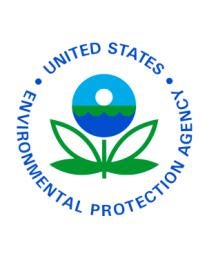U.S. EPA and Wisconsin DNR have increasingly focused on vapor intrusion ("VI") as a major exposure concern at many environmental sites where volatile organic compounds ("VOCs") have leaked into the soil and groundwater. VI results from the upward or lateral migration of vapor associated with products like industrial degreasers, dry cleaning solvents and petroleum through soil, groundwater and other pathways into the breathing air of residences and workplaces. Rapid evolution in VI science has led to greater understanding of the risks associated with VI and improved approaches for evaluating and managing the associated risks. This summer, for the first time since 2002, EPA released its final VI policy in two technical guidance documents.
The first guide, OSWER Technical Guide for Assessing and Mitigating the Vapor Intrusion Pathway from Subsurface Vapor Sources to Indoor Air ("the VI Technical Guide"), represents significant changes to EPA's 2002 Draft VI Guide. The VI Technical Guide presents a recommended framework for addressing potential VI concerns at any CERCLA, RCRA or Brownfield site, including any building or structure on an affected site. Some of the key policies and recommendations from EPA include the following:
-
Guidance on planning, scope and conduct of a VI site investigation, including the development of a Conceptual Site Model;
-
Recommendation for "multiple lines of evidence": soil vapor, sub-slab and indoor air sampling;
-
Discussion of risk assessment under numerous exposure scenarios, including updated generic attenuation factors, toxicity values and chemical properties;
-
Clarification and assertion of EPA's authority for its recommendation to use EPA standards, rather than OSHA's permissible exposure limits (PELs), which OSHA admits are "outdated and inadequate for ensuring protection of worker health"; and
-
Discussion of engineered exposure controls and building mitigation, including subsurface remediation.
EPA's 2002 Draft VI Guide did not address petroleum vapor intrusion. Thus, the second guide, Technical Guide for Addressing Petroleum Vapor Intrusion at Leaking Underground Storage Tank Sites, provides information on new approaches as to how petroleum hydrocarbon vapors from regulated underground storage tanks should be addressed.
Shortly after EPA issued its VI guidance, DNR adopted the EPA guidance and recently released two VI guidance documents of its own. The first, "Vapor Intrusion Continuing Obligations Applied in DNR Closure Approvals," referred to as RR-5474, addresses DNR processes specific to closure approval letters. The second, "DNR Case Closure Continuing Obligations: Vapor Intrusion," referred to as RR-042, provides information to responsible parties, environmental consultants and others for completing the necessary case closure form.
In order to achieve site closure from DNR the vapor exposure pathway must be investigated and remedial action taken to reduce the mass and concentration of VOCs when vapor risk screening levels (sub-slab) are exceeded. If an engineered remediation system must operate and/or be maintained after site closure in order to interrupt or mitigate the vapor pathway, then a "continuing obligation" is required (see below). These new DNR documents describe the application and implementation of continuing obligations due to VI concerns and are applicable at all closed sites where residual contamination was left in place. In fact, in recent years VI issues have become one of the primary bases upon which closed sites have been reopened.
Both of the DNR documents contain guidance that DNR, contaminated site owners, and environmental consultants may use to make decisions for applying VI continuing obligations to affected properties. Continuing obligations to address VI concerns may include operation and maintenance of vapor mitigation systems, additional monitoring, or even property use restrictions until such time as it can be demonstrated that the potential VI exposure is no longer present. DNR recommends the elimination of as many long term obligations as possible through detailed assessment and adequate remedial actions.
One of the effects of new EPA and DNR VI guidance could be increased uncertainty in real estate transactions. Gathering the kinds of data required under a "multiple lines of evidence" approach takes time and is costly. Moreover, the schedule is not consistent with the normal timetable for consummating deals as sampling may be required over multiple seasons or years. Similarly, even after performing a VI assessment of the property a party may not obtain reliable answers about health or liability risks. As a result, responsible parties, developers, tenants, insurers and lenders are all affected due to more stringent cleanup standards, the possibility of site reopening, concerns of exposure of tenants and residents, the prospect of VI claims, and the value of collateral.
Effective compliance with EPA's and DNR's new VI guidance will require innovative and site specific solutions early in the remediation process. Responsible parties, their consultants and legal counsel should thoroughly evaluate the extent and type of remedial measures chosen, as well as which continuing obligations might be needed if the cleanup is incomplete. The parties should consider and discuss the current, expected and planned land use because remediating to a greater extent may minimize or even eliminate the need for continuing obligations, which can be costly, burdensome and affect the owner's future use, redevelopment and sale of the affected property. Successfully navigating to site closure requires an experienced team of multi-disciplinary experts employing cost effective and practical approaches.




 i
i


